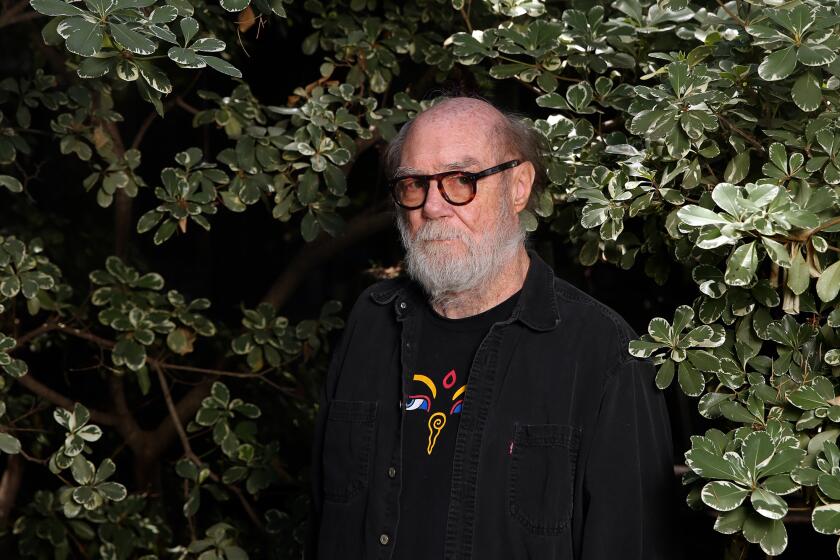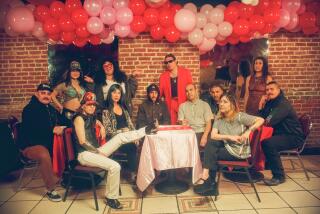Pandemic portraits: Ian Byers-Gamber captures the art world from his car
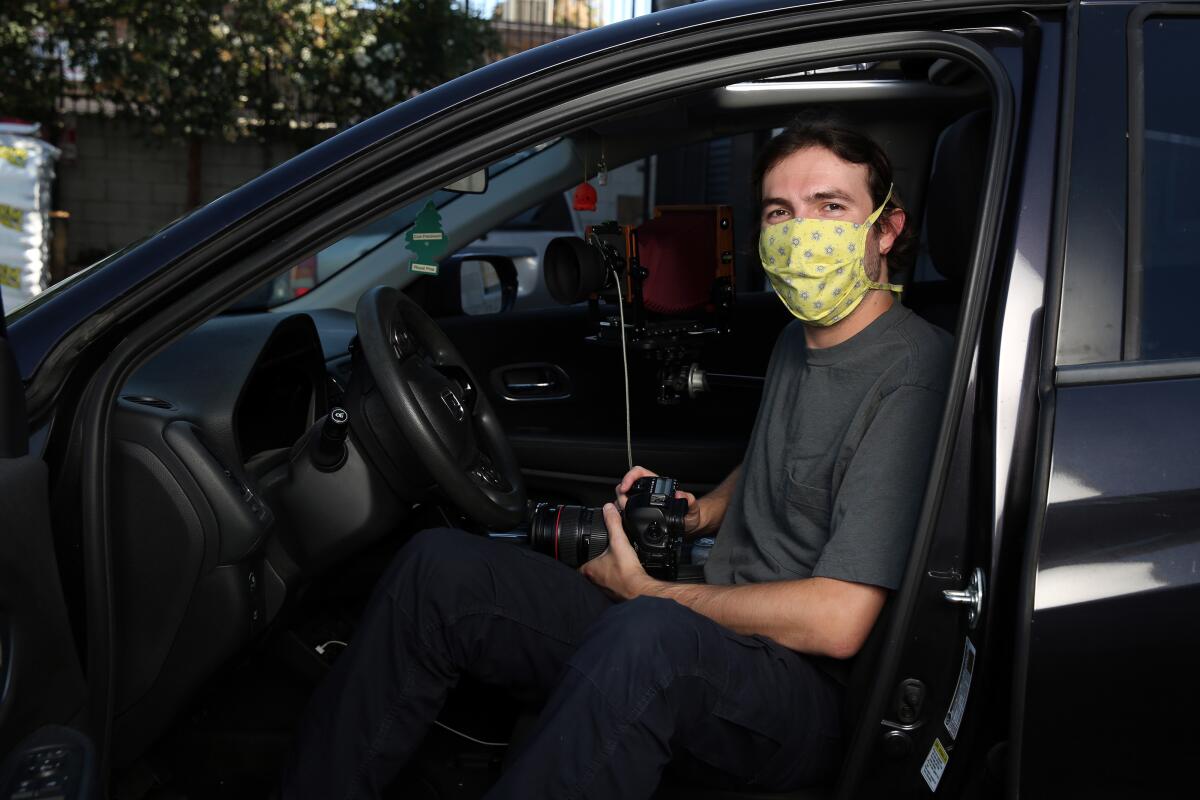
How to shoot a photographic portrait in the age of contagion?
Proximity is risky. A sealed studio unimaginable. The very form — one person capturing the likeness of another in a shared space — has required an overhaul at a time when we shout at each other from a distance of six feet, surgical masks obscuring our expressions.
Artist Ian Byers-Gamber, however, has found a way to embrace these limitations and make some intriguing photographs in the process.
Since April, the Los Angeles artist has hit the town with a pair of bulky film cameras — a medium-format Mamiya RB67 and a large-format Chamonix 45F-2 — to make portraits of the city’s artists and arts workers at this moment in time. Serving as studio is his black Honda HR-V. His principal framing device: his car window.
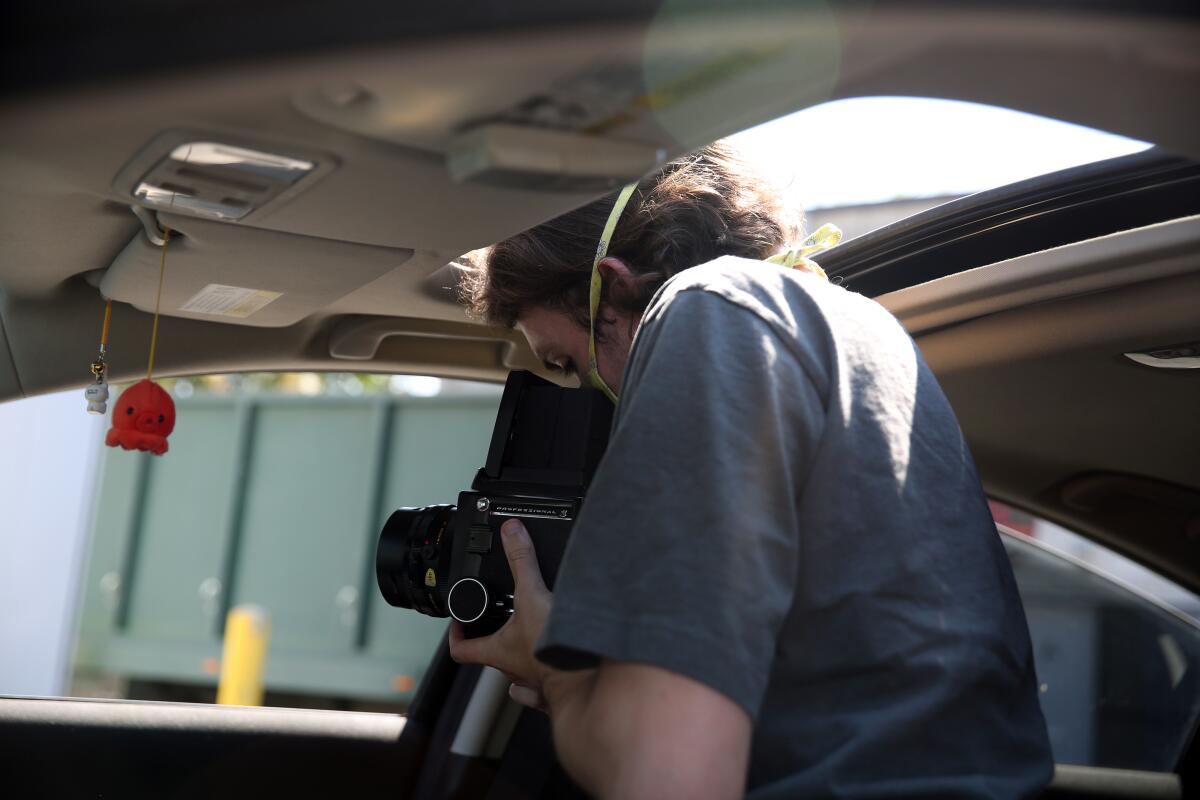
That’s because Byers-Gamber doesn’t get out of the car to take pictures. He does it from the safety of his front seat, capturing his subjects in front of their homes and studios. In this way, he has made a striking record — more than 130 portraits, all shot on film — of the Los Angeles artistic community amid the pandemic. Some he has posted to his Instagram account (@bamblerdander), where the series has garnered an art world following.
Paul McCarthy’s Hammer Museum solo show shut down for COVID-19. From home, he talks of human nature, violence and turning from performance to drawing.
They are images that read like informal hellos.
Performance artist Patrisse Cullors (who is also a founder of Black Lives Matter) stands casually before a bright Spanish Revival bungalow. Sculptor Beatriz Cortez peers down, smiling, from a Modernist terrace. Josh Vasquez materializes between the bars of a fence. Paul Pescador hams it up on an apartment stairwell. Paul Mpagi Sepuya photographs the photographer right back. Nao Bustamante and Marcus Kuiland-Nazario strike a pose with sangria.
The project, says Byers-Gamber, “felt like a way to see people but with a safety mechanism.”
It also functions as a record of the Southern California landscape. Los Angeles serves as backdrop to this series, represented by fragments of old factories, Craftsman homes and Spanish Revival bungalows.
“You have suburbia and deep downtown — a couple of people are at work, most are at their homes,” says the artist.
“I’m really into the New Topographics,” he adds, referring to the 1970s landscape photographers known for recording the banal aspects of the man-made environment. “It’s thinking of the geography of it too.”
The portraits have taken Byers-Gamber all over Los Angeles, Long Beach, the San Fernando Valley and Claremont.
On a warm Wednesday afternoon in July, he pulls up to a small industrial park full of automotive shops in North Hollywood to photograph artist Alison Saar.
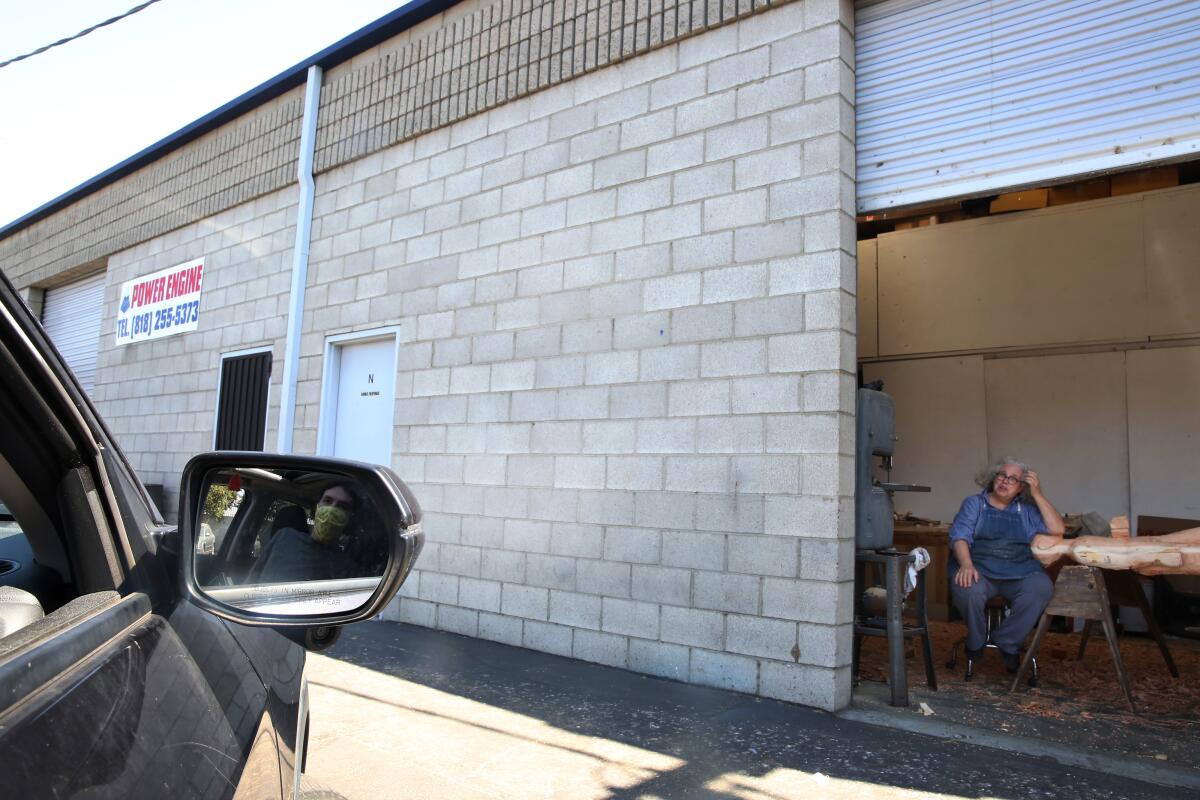
Saar is known for producing sculptures of Black figures inspired by U.S. cultural histories, figures imbued with an otherworldly power. On this day, she is whittling a piece of wood into recognizable human form.
Byers-Gamber pulls up and angles his Honda in front her studio’s open gate. Then he gets to work: rolling down windows and opening the sunroof to give himself enough headspace to be able to look down into the viewfinder of the Mamiya. A couple of men at one of the automotive shops nearby feed a flock of pigeons, unperturbed by the photo shoot in their midst. In a few clicks, he is done. It will take much longer to develop and print the photo; he has yet to post the Saar image to his Instagram account.
Byers-Gamber says the informality and the improvisational nature of the shoots are the exact opposite of how he generally works. Professionally, he specializes in portraiture and documenting museum exhibitions. For one recent project, he photographed the puppets of the Bob Baker Marionette Theater. Those pictures were shown last year at the Chan Gallery at Pomona College.
“Normally I would shoot with lights in a controlled environment,” he says. “Now I’m shooting in a car and the framing may be wonky depending on where I can park. I’ve really had to let go.”
He had met Saar once previously, while photographing one of her works for the Benton Museum at Pomona College.
Saar says she was intrigued by the images because they so clearly reveal the photographer’s perspective: windows and rearview mirrors regularly frame the portraits (in ways that echo Lee Friedlander’s “America by Car” series).
Byers-Gamber says he has been thinking a lot about car culture as part of the series: “That feeling when you drive and you can feel invisible, you are in your bubble.”
“It’s like a double confinement,” Saar says. “He’s in his car and people are in their spaces, their terraces and balconies.”
Like many art workers, Byers-Gamber found himself without gigs from one day to the next when the safer-at-home orders landed in March. Shows were put on hold. Exhibitions were canceled. The first few weeks of the pandemic, he says he wasn’t quite sure what to do with himself. “I was totally paralyzed,” he says.
But as the days passed, he decided it was time to pick up his camera. “My first impulse was taking photos of empty streets, but I didn’t want to glorify that — the ruins porn thing,” he says.
So he began calling friends to see who might be up for a portrait. “I wanted to make it about people and about survival,” he explains.
In the early days, traffic was extraordinarily light, so he could get around with ease. Some friends waited for him with small gifts: some cookies, a bit of food, a plant, some books.
“It was,” he says, “like Los Angeles had shrunk.”
Over the weeks, one photograph has led to the next. Friends have introduced him to friends and friends offriends. The circle of portraits has expanded to include artists he may be meeting for the first time.
With the pandemic still raging, Byers-Gamber isn’t done shooting. But ultimately, he’d like to assemble the collected images into a book.
The working title: “So Close Right Now.”
In a time of distance, proximity can still be found.
Brigid Berlin, a key figure in Andy Warhol’s New York Factory strudio, resisted the label of “artist” but her photos and outlandish performances revealed the heart of a creator.
More to Read
The biggest entertainment stories
Get our big stories about Hollywood, film, television, music, arts, culture and more right in your inbox as soon as they publish.
You may occasionally receive promotional content from the Los Angeles Times.
